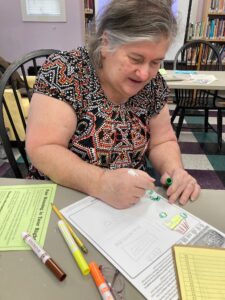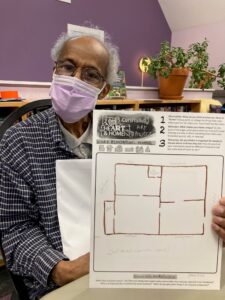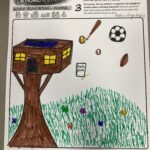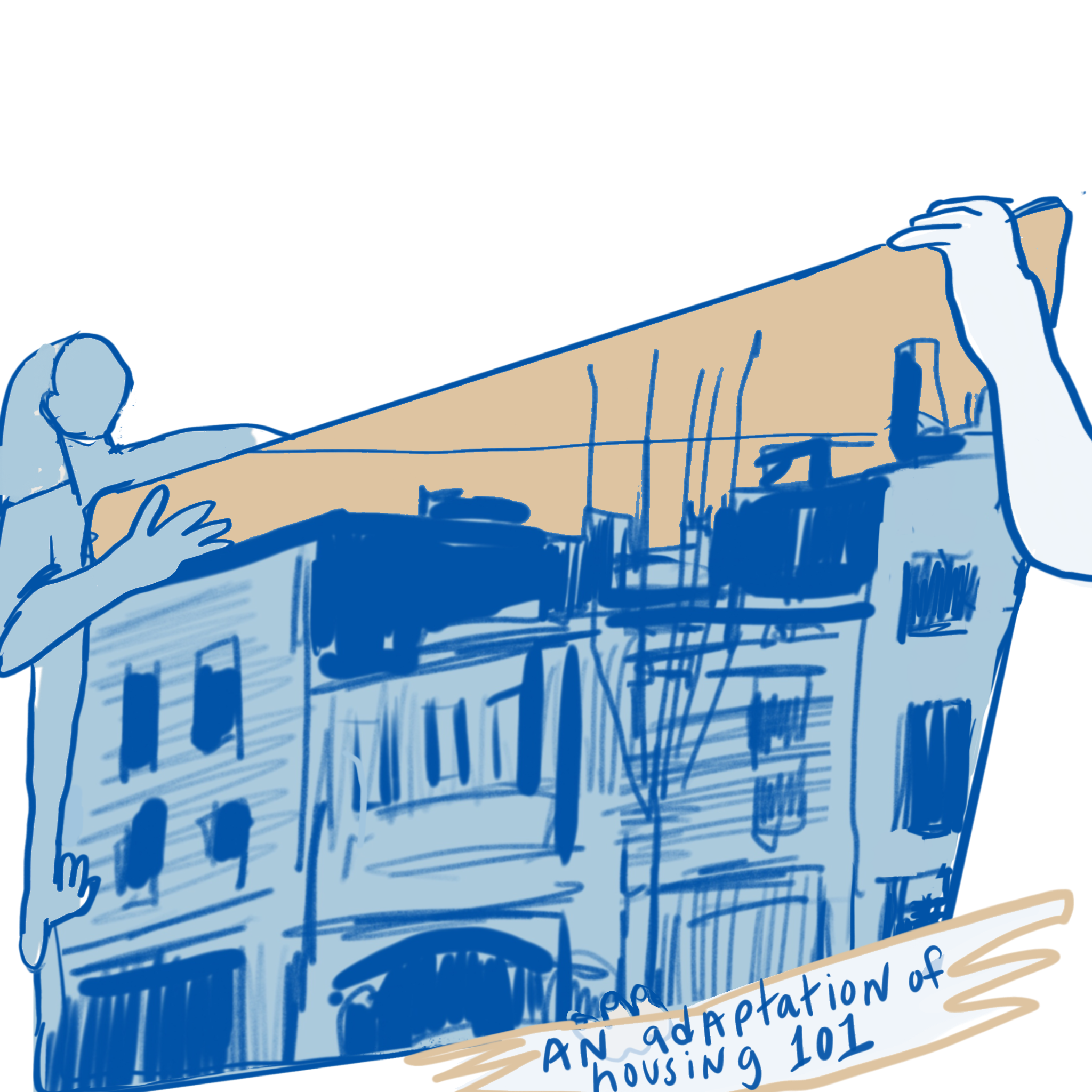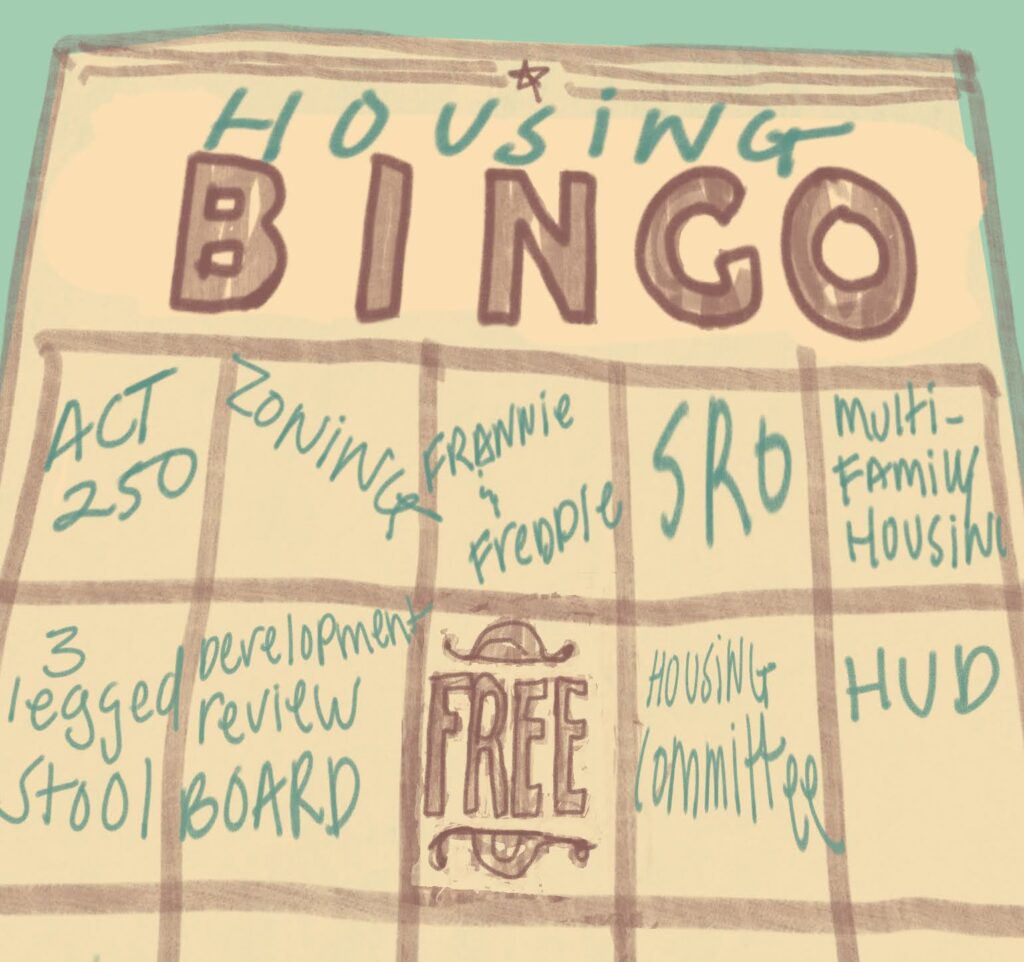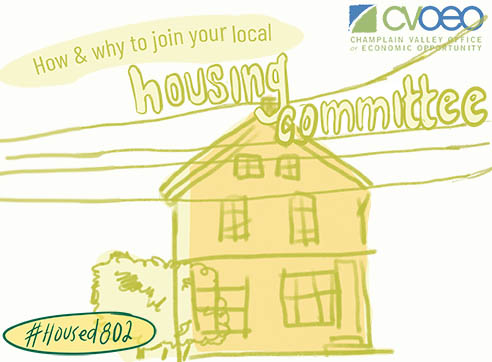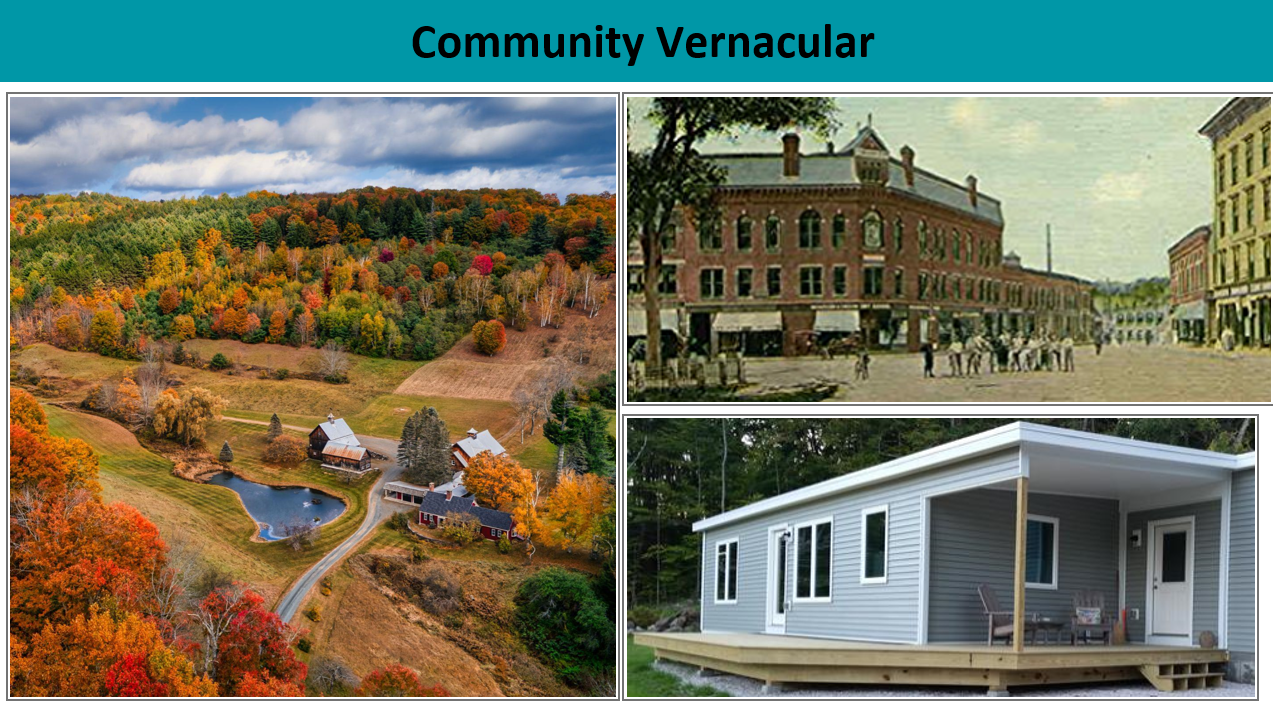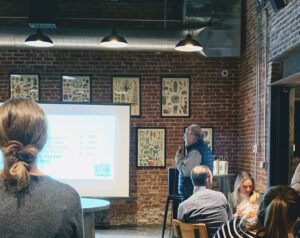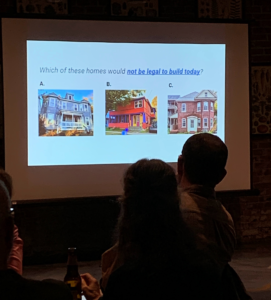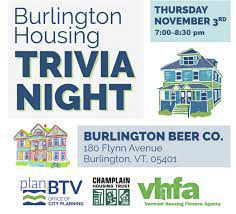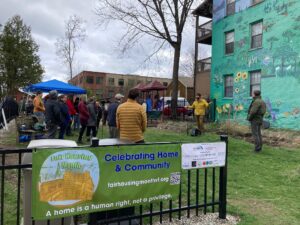 It’s been a busy and fun month so far with thought-provoking Fair Housing Friday webinars, community Know Your Rights workshops, more than 1,000 art kits distributed through libraries and housing sites across the state, and more. We’re also collaborating with the City of Burlington’s Community & Economic Development Office to distribute more art kits, along with free books on issues of housing and homelessness.
It’s been a busy and fun month so far with thought-provoking Fair Housing Friday webinars, community Know Your Rights workshops, more than 1,000 art kits distributed through libraries and housing sites across the state, and more. We’re also collaborating with the City of Burlington’s Community & Economic Development Office to distribute more art kits, along with free books on issues of housing and homelessness.
Yesterday’s Fair Housing Month event at Champlain Street Park in Burlington combined park clean-up, art, and neighborhood connections with inspiring words about housing equity, environmental justice, and community from CVOEO, Burlington’s Office of Racial Equity, Inclusion & Belonging and Parks & Recreation Department, and reps from our congressional delegation. See some of the news coverage here: https://www.mynbc5.com/article/burlington-community-members-clean-up-parks-to-help-promote-equitable-housing/43647899
Also yesterday, a sweet HeART & Home activity hosted by the Groton Public Library and RuralEdge brought together a small group of elementary school students and seniors to make art related to home and community.
Here’s a sampling of what’s coming up next – please join us!
- THURSDAY 4/20 is a conversation about the connections between public spaces, art, and home at the opening reception for CVOEO Fair Housing Project staffer and artist Corrine Yonce’s “Longing Is Just a Word for Knowing” exhibit at King Street Laundromat, 3-6pm at 72 King St.
- FRIDAY 4/21 is the last Fair Housing Friday webinar, Visions of Home: Broadening the Way We Envision Home and Community, 12:30-1:30pm via Zoom. REGISTER HERE
- NEXT WEEK, there will be two more in-person events in Burlington:
- Wednesday 4/26: Vocabulary of Home: How We Talk About Housing, 6-7:30pm at Burlington City Hall. CVOEO’s Corrine Yonce shares insights about our housing vocabulary – featuring images from her recent public art installation at King Street Laundry, lessons and images from HeART & Home Fair Housing Month responses, and anecdotes from the field. Free food, books, and conversation.
- Saturday 4/29: Fair Housing Month closing celebration! Movie Night at Main Street Landing Performing Arts Center – 6pm Happy Hour with food and cash bar followed by The Pursuit of Happyness at 7pm. FREE – REGISTER HERE
This Will Smith film tells the true story of a newly single father determined to lift himself and his son out of poverty and homelessness. Please register in advance for the Happy Hour: https://sevendaystickets.com/events/fair-housing-month-movie-night-the-pursuit-of-happyness-4-29-2023
- PARTNER EVENTS ALL OVER VERMONT – Details at https://fairhousingmonthvt.org/event-calendar:
- Friday 4/21: Fair Housing Feedback at Bradford Public Library with DHCD
- Friday 4/21: Homes for Hartford Paint & Sip hosted by Junction Arts & Media
- Monday 4/24: Bellows Falls Garage Affordable Housing Opening with Windham & Windsor Housing Trust
- Tuesday 4/25: HeART & Home Exhibit Reception at Bent Northrop Library in Fairfield
- Wednesday 4/26: Finding Home Drop-in Watercolor at South Burlington Public Library with Art Show Reception Saturday 4/29
- Friday 4/28: Fair Housing Feedback at Brownell Library in Essex with DHCD.
- Saturday 4/29: BIPOC Centered Homebuyer Group with The Root and Windham & Windsor Housing Trust
- Wednesday 5/3: Affordable Housing Discussion inspired by the book Fixer Upper: How to Repair America’s Broken Housing System hosted by South Burlington Public Library, South Burlington Affordable Housing Committee, and CVOEO
- Wednesday 5/3: Fair Housing Feedback at Bennington Free Library with DHCD.
About Fair Housing Month
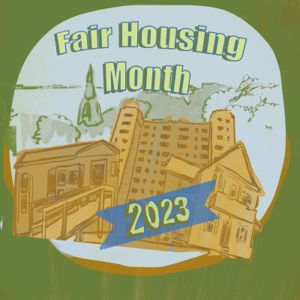 Each April we celebrate the 1968 passage of the Fair Housing Act with a series of free public education and art events to raise awareness about the importance of equal access to housing, free from discrimination, and the positive role that inclusive, affordable housing plays in thriving communities. Virtual and in-person activities include workshops, community discussions, presentations, library events, and the all-ages HeART & Home Community Art Project.
Each April we celebrate the 1968 passage of the Fair Housing Act with a series of free public education and art events to raise awareness about the importance of equal access to housing, free from discrimination, and the positive role that inclusive, affordable housing plays in thriving communities. Virtual and in-person activities include workshops, community discussions, presentations, library events, and the all-ages HeART & Home Community Art Project.
Fair Housing is the right to equal opportunity in housing choice and the right to rent or buy a dwelling free from discrimination. The federal Fair Housing Act prohibits discrimination in housing based on race, color, religion, national origin, sex, disability, and family status. Vermont has additional protections based on age, marital status, sexual orientation, gender identity, receipt of public assistance, being a victim of domestic violence, sexual assault, or stalking, and denial of development permitting based on the income of prospective residents. For more information about fair housing in Vermont, visit www.cvoeo.org/FHP or email fhp@cvoeo.org.
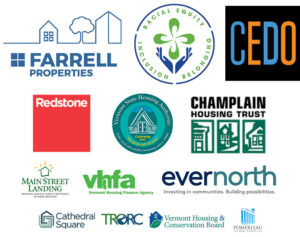
The Fair Housing Project of CVOEO coordinates April Fair Housing Month activities in collaboration with a statewide network of housing, community, and arts partners, including Burlington City Arts, Burlington Community and Economic Development Office (CEDO), Burlington Office of Racial Equity Inclusion and Belonging (REIB), Junction Arts Media, ONE Arts, Randolph Community Development Corporation, RuralEdge, Vermont Affordable Housing Coalition, Vermont Department of Housing and Community Development, Vermont Department of Libraries, Vermont Human Rights Commission, Vermont Legal Aid, Vital Communities, and White River Valley Consortium. These activities are made possible through the generous sponsorship of Farrell Properties, CEDO, REIB, Champlain Housing Trust, Redstone, Vermont State Housing Authority, Evernorth, Main Street Landing, Vermont Housing Finance Agency, Two Rivers-Ottauquechee Regional Commission, Vermont Housing & Conservation Board, Cathedral Square, and Pomerleau Real Estate.
